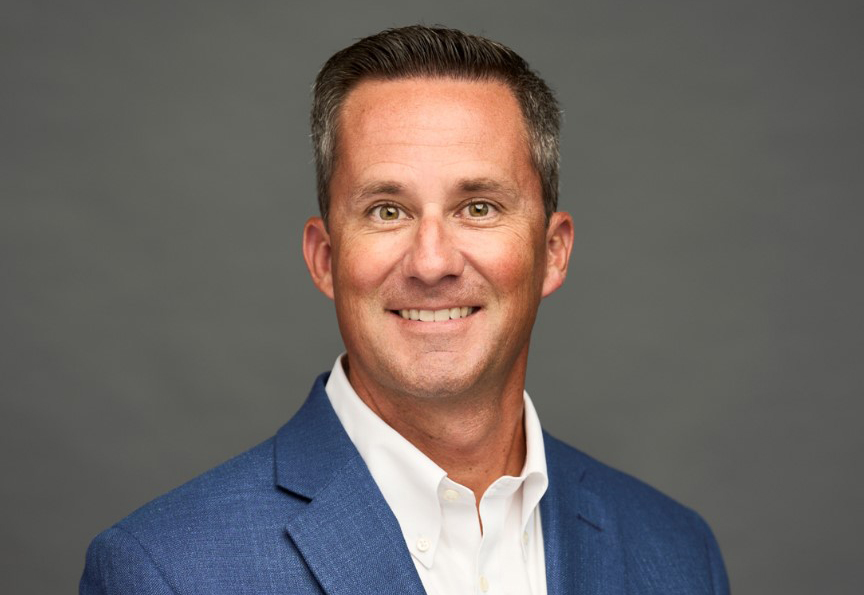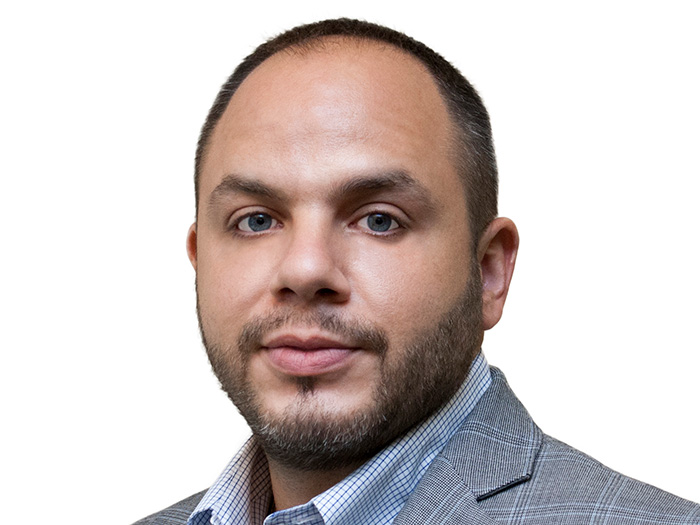End the Silence: Let’s Talk About Mental Health at Work

Mental health issues have long been stigmatized, discussed in hushed tones, if at all. But a string of high-profile suicides in recent years, including designer Kate Spade and comedian Robin Williams among others, sparked a broader public conversation.
A growing list of celebrities and social media personalities have since broken silence about their own struggles with depression, anxiety, PTSD or other mental health conditions. Now that discussion is taking place at the workplace level — for good reason.
The mental well-being of a company’s employees can have a direct impact on performance, production and profitability. Mental health concerns are also a key piece of the biopsychosocial influences that exacerbate work injuries, slow recovery progress and even cause simple injury claims to spiral out of control.
To help employers better understand mental health risks within their own employee population, Unum conducted research with 1,850 U.S. employed adults, 500 of which self-identified with a diagnosed mental health issue. Together with DMEC, additional research was conducted among 268 human resources professionals. DMEC and Unum partnered to discuss their findings during a recent webinar.
Do Employers Really Need to Deal With This?
The results of Unum’s Strong Minds at Work report paints a fairly grim picture of mental health across a broad swath of American workplaces. By the numbers:
- One in 5 adults experience issues related to mental illness in a given year.
- One in 25 lives with mental illness severe enough to interfere with major life activities.
- There has been a 10% increase year-over-year in behavioral health claims, 2015-2018.
- 47% of respondents were aware of a colleague with a mental health issue.
- 50% reported feeling mentally unwell within the past 6 months.
- Nearly 70% reported that health was the #1 factor impacting their mental well-being, followed closely by finances (67%).
- 66% of those surveyed reported having a diagnosed with depression, while 67% had received an anxiety diagnosis.
But one figure in particular is especially jarring. The Unum/DMEC survey revealed that 42% of respondents who admitted to struggling with mental health also admitted they had come to work feeling suicidal. Suicide is the nation’s 10th-leading cause of death, with middle-aged adults impacted even more than teens and college students.
Few employers are fully comfortable wading into the murky waters of suicide and depression, but it’s not going away. The CDC reports that from 2000 to 2016, the U.S. suicide rate among working aged (16–64 years) adults increased 34%. According to BLS data, there were 291 workplace suicides in 2016 — a record high.
Every employer thinks, “That’ll never happen here.” No doubt that was the case for a Bank of America Corp. call center in New Mexico and for leaders at Apple Inc.’s Cupertino, Calif., headquarters.
Workplace suicides leave behind a grisly trail of traumatized family members, friends and coworkers. Witnesses to such incidents at work suffer from PTSD, depression, anxiety and more.
After the shock wears off and the finger pointing starts, questions arise about whether the employer could have done more to prevent the tragedy. Once the social media response kicks in, it will take on a life of its own.
It could take weeks or even months before the company can separate itself from the incident.
Why Is It Getting Worse Now?
While there’s no tidy answer to explain why this is happening now, it’s fairly easy to identify some of the most likely contributing factors. Income inequality has dramatically worsened in recent years. Political divisiveness is at a level most of the country has never seen. Wrapped up in an overall feeling of distrust toward corporate America, these are the hallmarks of the era.
Many changes in the employee-employer relationship have taken place in the last few decades and those changes can certainly promote negative mental health issues, said David Goldsmith, medical consultant with Unum. Goldsmith discussed the details of the report during a recent DMEC webinar.
“We’re driven by metrics. Everything is monitored, and the employee feels threatened. The cashier has to do X number of items per minute or he’s going to lose his job. The bond between the employer and the employee doesn’t feel like family anymore.” — David Goldsmith, medical consultant, Unum
“Employees have become more disposable in a corporate culture. They sometimes experience themselves as replaceable parts. I heard somebody say recently about the company they were working for: ‘I feel like I’m a flea on the dog. I can go. But another one’s going to replace me, and it doesn’t make a bit of difference to that dog.’ ”
They’re also more isolated by technology than ever before, said Goldsmith. Email and group productivity apps have taken the place of face-to-face conversations. Technology has also become a hard task-master as metrics, analytics and now artificial intelligence are motivating employers to push productivity ever further.
“Five years ago, I would sit in a room with my peers and talk face to face,” said Goldsmith. “As technology moves along, I spend more time looking at a computer screen and talking on a headset. I’ve even seen people take their laptops into the toilet with a headset on their head. That’s crazy stuff.
“We’re driven by metrics. Everything is monitored, and the employee feels threatened. The cashier has to do X number of items per minute or he’s going to lose his job. The bond between the employer and the employee doesn’t feel like family anymore.”
These things affect perceptions and cause feelings of threat, fear, loss of control, loss of predictability and to some extent learned helplessness, said Goldsmith — a feeling of “There’s nothing I can do to change this.”
Get It Out in the Open
Unum’s report, combined with existing data, reveals an added level of insight. The CDC’s most recent reported suicide rate is highest for manual laborers, construction workers, miners and mechanics, factory and production workers, the highest of any occupational category.
Yet Unum reports the lowest number of behavioral health claims for this group, and the highest number for professional categories such as banking and finance.
“I think that those who seek out help more readily are more aware — they acknowledge the problem and they seek help more often than those who are in labor forces, who perhaps discount [mental health issues],” said Goldsmith. Reaching those employees less likely to seek help is a challenge for employers, who must work to normalize the topic and decrease the stigma that often surrounds it.
Clearly communicating with employees about all of the resources and support available to them can make the difference with engagement and utilization. Regularly relaying messages about good mental health habits and practices can help employees get more comfortable with the topic.
The Mind-Body Connection Is Key
According to the Unum study, respondents cited health (69%) and finances (67%) as the top two triggers of mental health problems. That means that health advocate and financial consulting programs delivered through an IEP can be powerful tools to help employees take control of the issues causing them distress.
“It’s not necessarily the health and the finances themselves but rather the lack of control and predictability and the anticipation of the threats that they bring,” said Goldsmith.
Anything employers do to help support their people in these areas can also go a long way toward reducing the issues that lead to excessive anxiety, stress and negative physiological reactions. Those physiological reactions can include headaches, muscle spasms, GI pain and more.
This mind-body connection and the ravages of depression and anxiety are of particular concern for employees that are ill or injured, regardless of whether an injury is work-related or not.
“There is an intimate relationship between mind and body. One leads to and facilitates problems with the other.” Goldsmith used a vehicle metaphor to illustrate his point. “The gauge turns red, we ignore it. The alarm sounds, we ignore it. The rubber hose breaks — and now we’re stranded with steam coming out of the engine.”
This mind-body connection and the ravages of depression and anxiety are of particular concern for employees that are ill or injured, regardless of whether an injury is work-related or not.
“The more depressed and the more anxious they are, the more the body triggers those somatic symptoms.”
The somatic symptoms then trigger more depression and anxiety, he said. “It just becomes a vicious cycle for many, many patients.” The longer the cycle is allowed to go on, the less likely the chances of reaching a positive claim outcome or returning the person to work.
Off of work, the injured worker has fewer outlets to distract him or her from negative thinking. “The individual becomes more aware of pain, because they have less going on in their life” other than pills, doctors and anticipating more pain, said Goldsmith. As the person becomes less and less active, the body becomes deconditioned. Suddenly, familiar tasks become more difficult and cause more pain and feed the negative thinking cycle.
Often, he said, you’ll have a patient “who is frightened about what if I can’t get well? What if I can’t go back to work? What if I can’t earn a living? What if, what if, what if — that creates the secondary emotional problems, which again aggravate the physical. The whole is greater than the sum of the parts.”
In addition to offering health care coverage with a strong mental health component to employees, employers can integrate a variety of additional resources to support employees. EAPs, telemedicine or tele-behavioral health, and app-based programs are low-cost solutions for employers that allow employees to connect on their own time, when they are experiencing a problem.
No matter the industry or the company size, said experts, it’s vital to have strategies to reach employees and make sure that when the warning lights go off, that the right mental health resources are there. &










